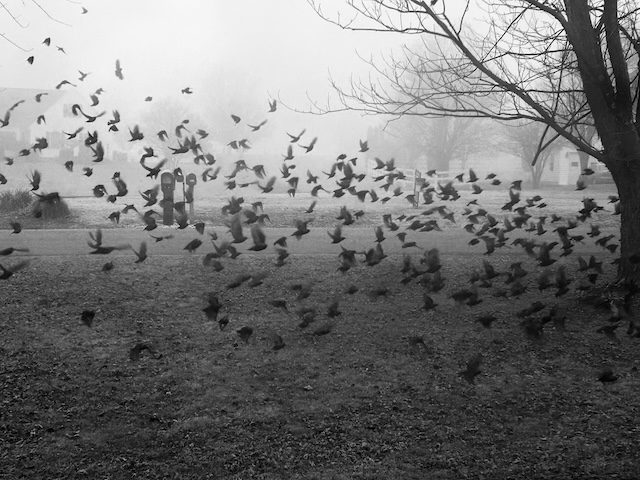There was a murmuration outside my window this morning. A murmuration, or a chattering. Perhaps even a congregation, a cloud or a clutter. Whatever collective noun one might choose to describe these creatures, my yard was covered in a multitude of Eastern European starlings this morning. Fascinated by the flock, I decided to some research on these noisy little birds.

The Eastern European starling (Sturnus vulgaris) is a fascinating bird with a complex history and a widespread presence across North America. Native to Europe and parts of Asia, this species was introduced to the United States in 1890, when 60 starlings were released in Central Park, New York, by a group of people who wanted to introduce all the birds mentioned in Shakespeare’s works. Since then, the starling has become one of the most common and adaptable bird species in North America.
Starlings may be common, but they are really quite striking. Their iridescent plumage looks green and purple in the light, and their yellow-tipped beaks are unique. Starlings are highly social, and often form large flocks, particularly in the winter months. One of the most remarkable behaviors of starlings is their murmurations—large, synchronized flocks that move in fluid patterns, creating a mesmerizing display in the sky. These murmurations are believed to help protect the birds from predators and aid in communication.
While starlings are skilled at adapting to urban environments, they are considered an invasive species in many areas. They compete with native birds for nesting sites and food, often outcompeting species like bluebirds and woodpeckers. Despite this, their adaptability and striking behavior continue to make them a subject of interest for birdwatchers and researchers alike.





























